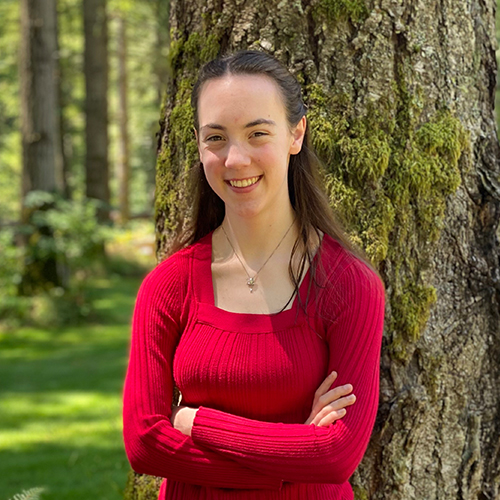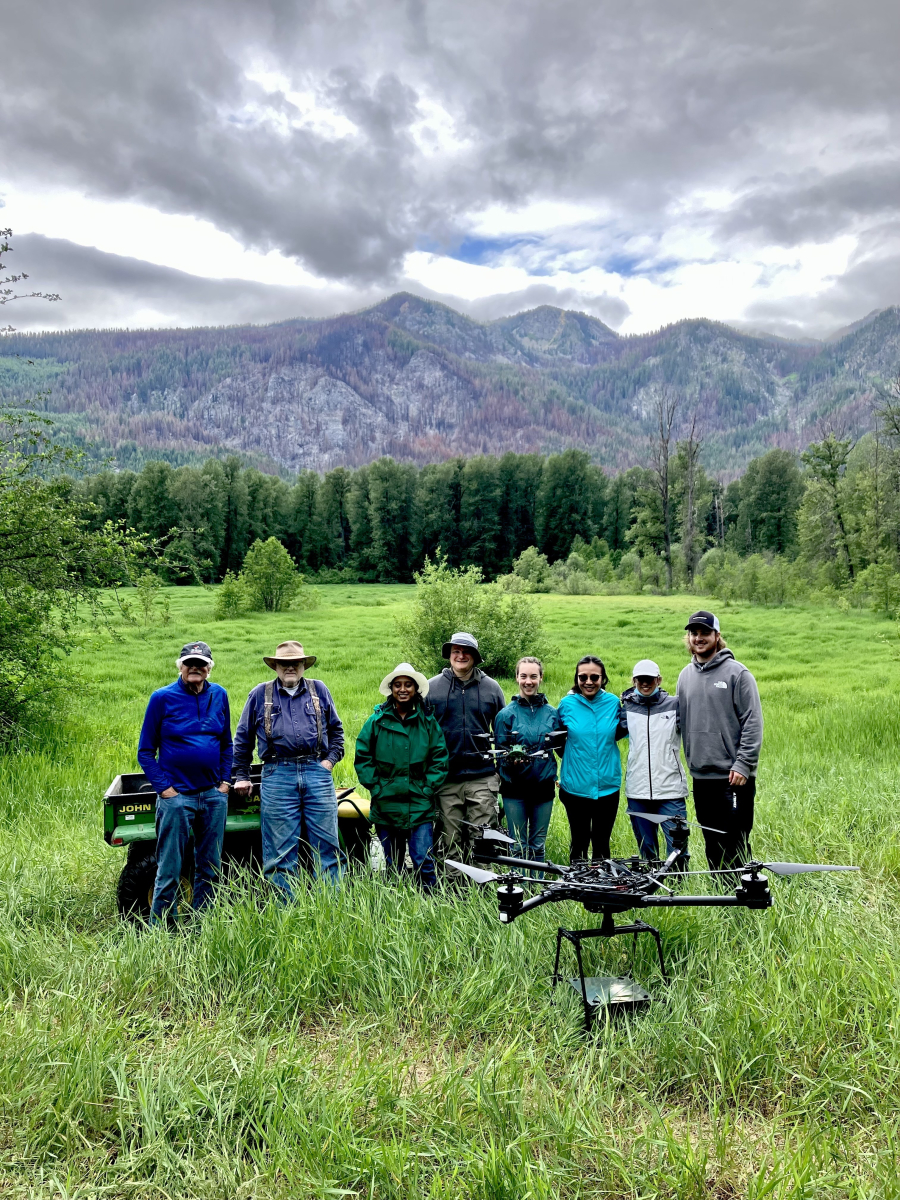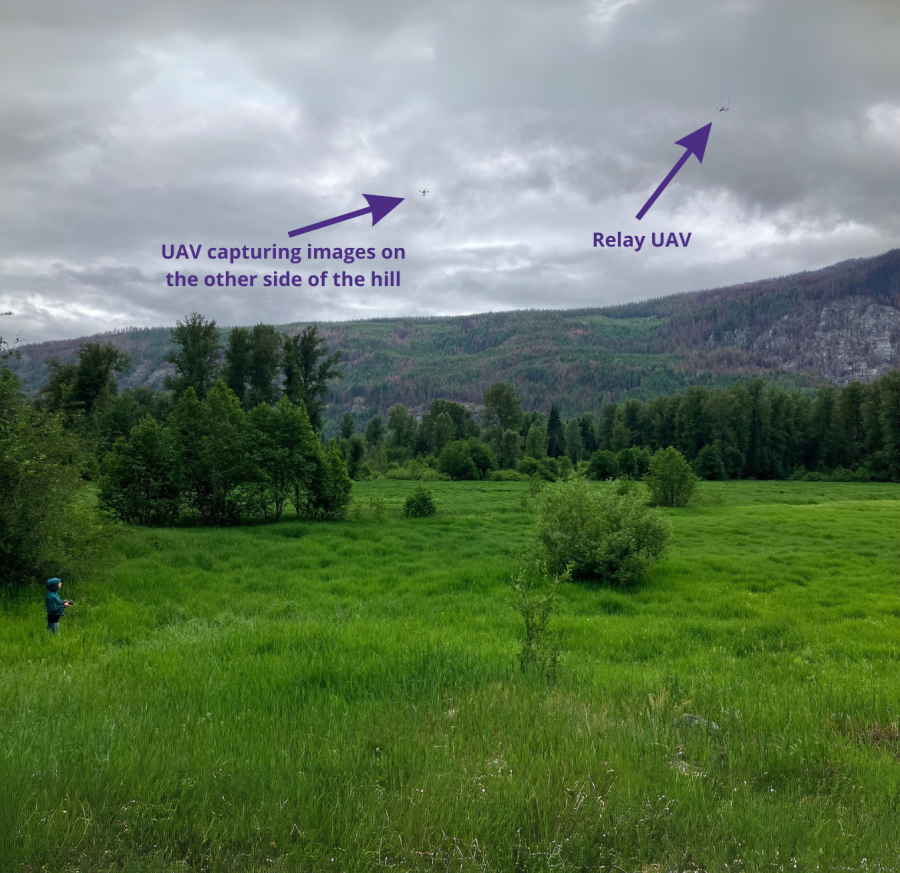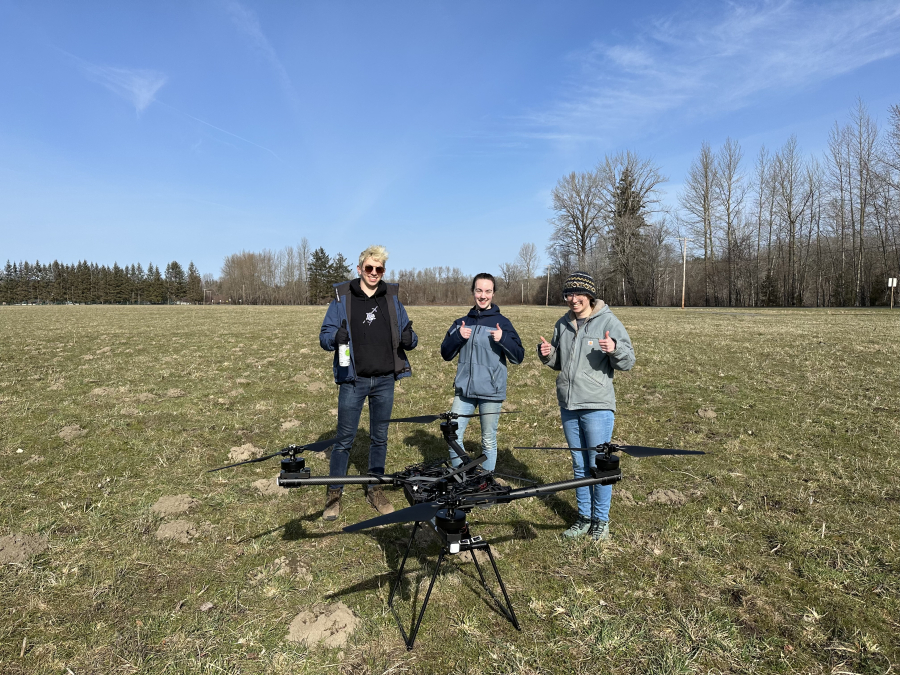April 4, 2024
Evelyn Madewell from A&A’s Control and Trustworthy Robotics Lab (CTRL) tells us about a new system to conduct drone-enhanced wilderness searches beyond a visual line of sight.

Evelyn Madewell
Previously, we’ve learned a bit of how A&A research is advancing drone-based wilderness search and rescue. You just presented a paper at SciTech 2024 that is advancing these capabilities. Could you tell us about your new system?
The system we developed is called the Reliable Uninterrupted Communications Kit for UAV Search, or RUCKUS, which is an affordable, modular, backpackable, self-contained system that enables UAVs to operate beyond (the pilot’s) visual line of sight (BVLOS).
Most BVLOS systems for UAVs simply use an extremely powerful radio with a very long range, which is great if the thing breaking your line of sight is just sheer distance. But it doesn’t help when the thing blocking your view is a line of trees or a hill. This is very common in search and rescue, especially in regions like our local mountains, where you may be looking for people in very complex and difficult terrain. The issue then isn’t necessarily distance, but rather accessibility which RUCKUS aims to solve.
Could you explain how this technology works and how it enhances the search capabilities of UAVs in wilderness operations?
RUCKUS has three pieces: the search UAV equipped with cameras, a ground control station from which the operation is run, and a relay UAV positioned between the two to relay signals between them. By strategically positioning the relay UAV, we can not only extend the range of the search UAV, but also operate it from the other side of an obstacle.

Professor Emeritus Juris Vagners, Paul Gray (owner of the flight test site), Sanghamitra Johri, Danny Broyles, Evelyn Madewell, Assistant Professor Karen Leung, Helen Kuni, and Matthew Keene stop for a photo during RUCKUS testing.
How did you come up with the idea for the Reliable Uninterrupted Communications Kit for UAV Search (RUCKUS)?
We talked to actual search and rescue teams about their needs and the types of environments they operate in. We worked closely with the Chelan County Sheriff’s Department, which conducts search and rescue operations in the North Cascades. They provided a lot of insight into how much UAVs can decrease the risk, cost, and time spent in search and rescue operations as well as what the current limitations are. We wanted to develop a system that is practical for these teams to conduct BVLOS operations using affordable, off-the-shelf components.
You and your team designed RUCKUS to be self-contained, modular, and affordable. How does this design contribute to its effectiveness and accessibility for first responders and safety-critical operations?
Search and rescue operations often take place in extremely remote locations not accessible by vehicle. Rescuers might need to carry all their equipment in a backpack and deploy it quickly, so it’s important that the system be self-contained.
These operations are also very expensive and largely conducted by volunteer organizations and government agencies operating on tight budgets, so the system has to be affordable. And a system that is highly modular allows integration with existing equipment and systems, which both brings down the cost and makes the system available to a wider range of potential applications.

Evelyn Madewell test-pilots a drone with the RUCKUS system.
How do the real-time video feedback and dynamic updates incorporated into the RUCKUS system contribute to enhancing mission success and supporting first responders in safety-critical operations?
When you’re looking for someone in the wilderness, especially someone who may be injured or exposed to the elements, time is of the essence. Getting real-time feedback from the search UAV can save hours of valuable search time, which can quite literally be the difference between life and death.
You conducted experimental flight tests to characterize the signal strength of the RUCKUS system. Could you share some insights into the results of these tests?

Eli Pollack, Evelyn Madewell and Helen Kuni take a break during flight testing.
We did two kinds of tests. One was data collection in an open field, simply measuring signal strength over a long distance and verifying that the connection is stable over the kinds of distances where we want to operate.
The other kind was more qualitative, making sure the system maintains a connection and that we can still get video from the search drone when there is an obstacle interrupting line of sight to it. We tested this with a few different setups and were able to show that it does work as intended.
Additionally, this is a pretty complicated system to operate, with two drones in the air at the same time, and we learned a lot about how to deploy a system like that safely and efficiently. A big part of the system is the procedures we developed that describe how to operate it and what to do if various things go wrong.
What’s next?
We are continuing to work on other projects designed to help first responders, like this year’s JCATI project which focuses on designing a UAV-based system that creates a real-time map of wildfires to help firefighters in very similar environments to what RUCKUS is designed for. We are actually using the same drone and a lot of the same equipment for that project, and it’s easy to envision those two systems being used together.
Go to the source
Beyond Visual Line-of-Sight Uncrewed Aerial Vehicle for Search and Locate Operations. Evelyn Madewell, Eli Pollack, Helen Kuni, Sanghamitra Johri, Daniel Broyles, Juris Vagners and Karen Leung.